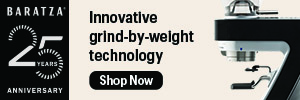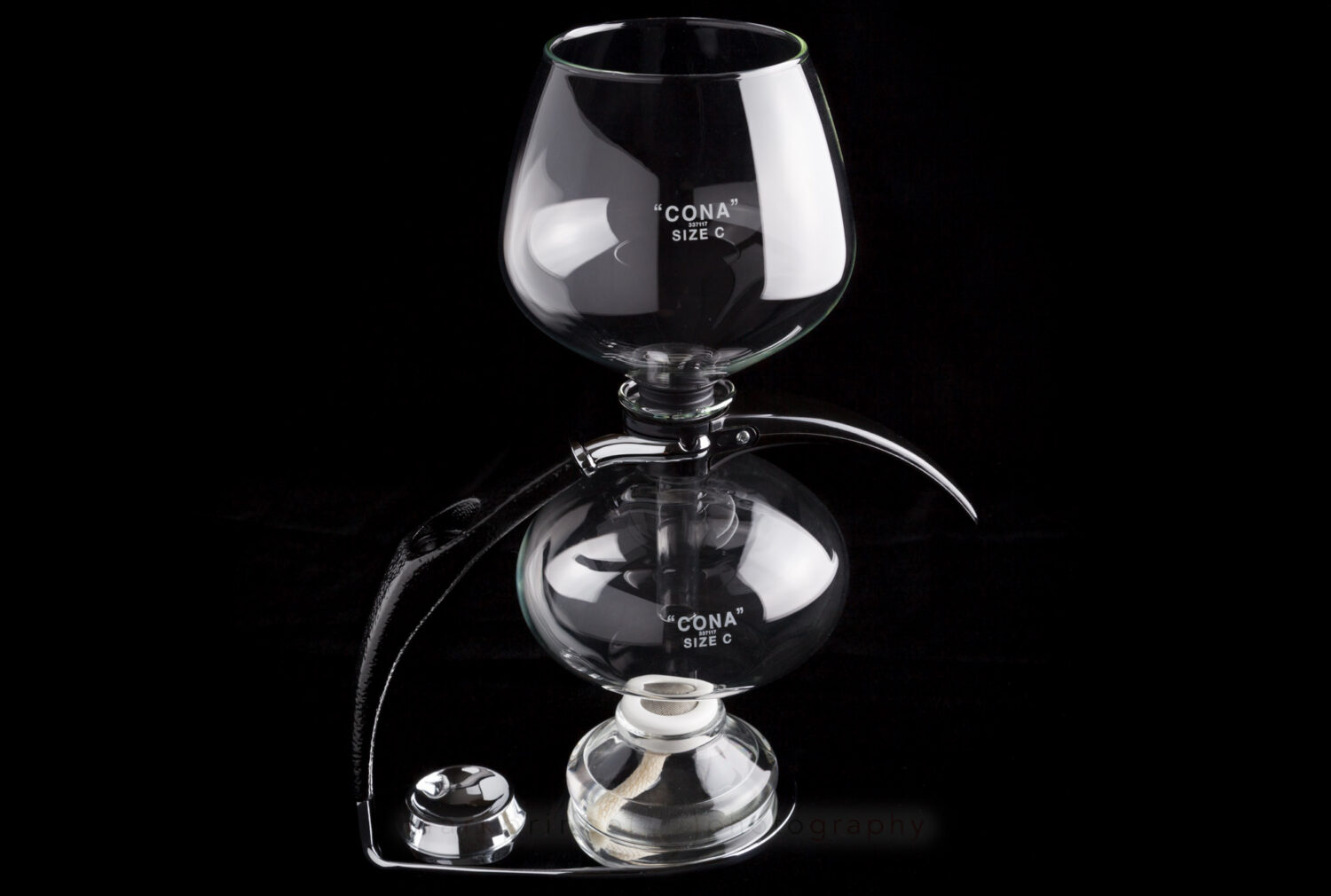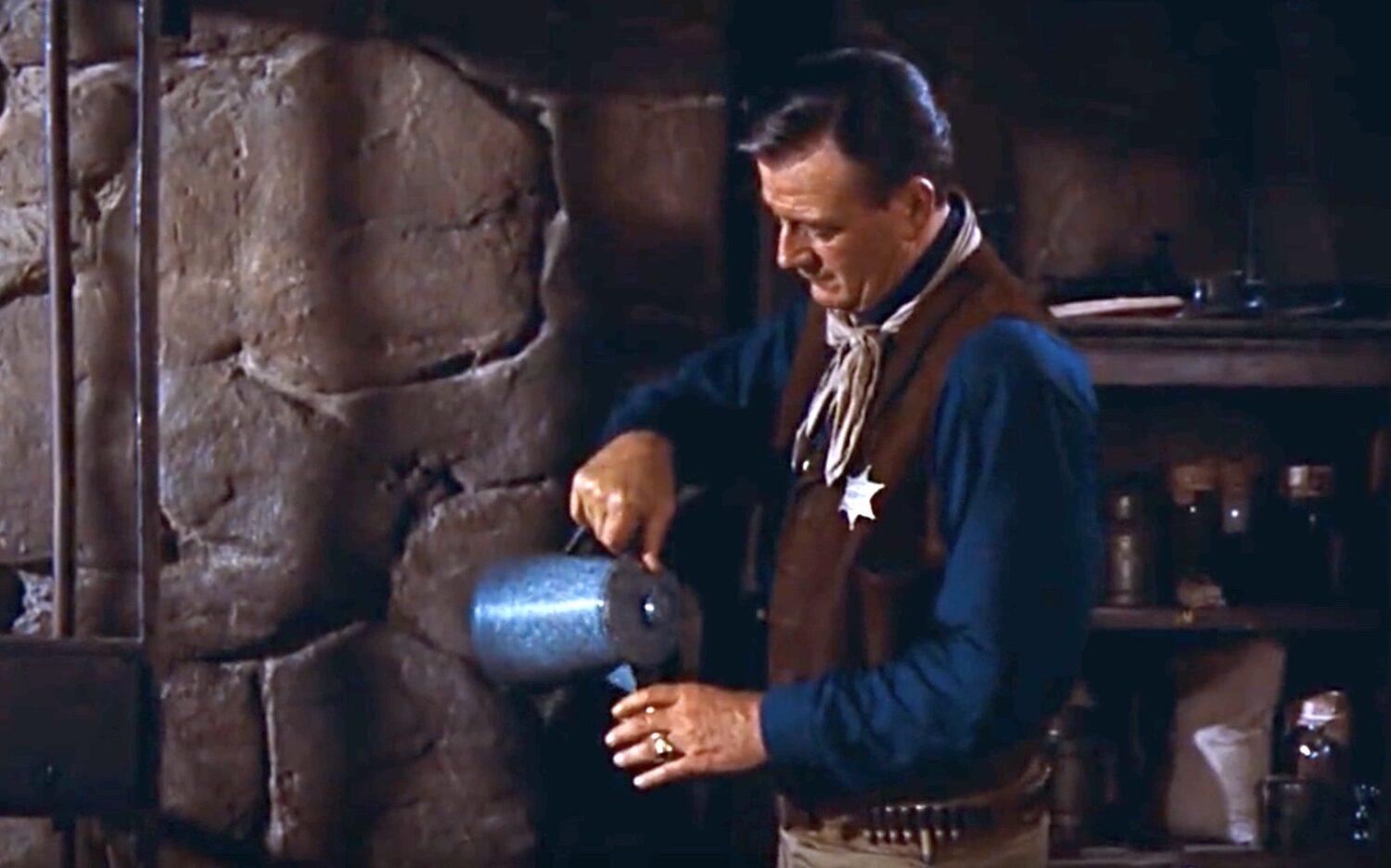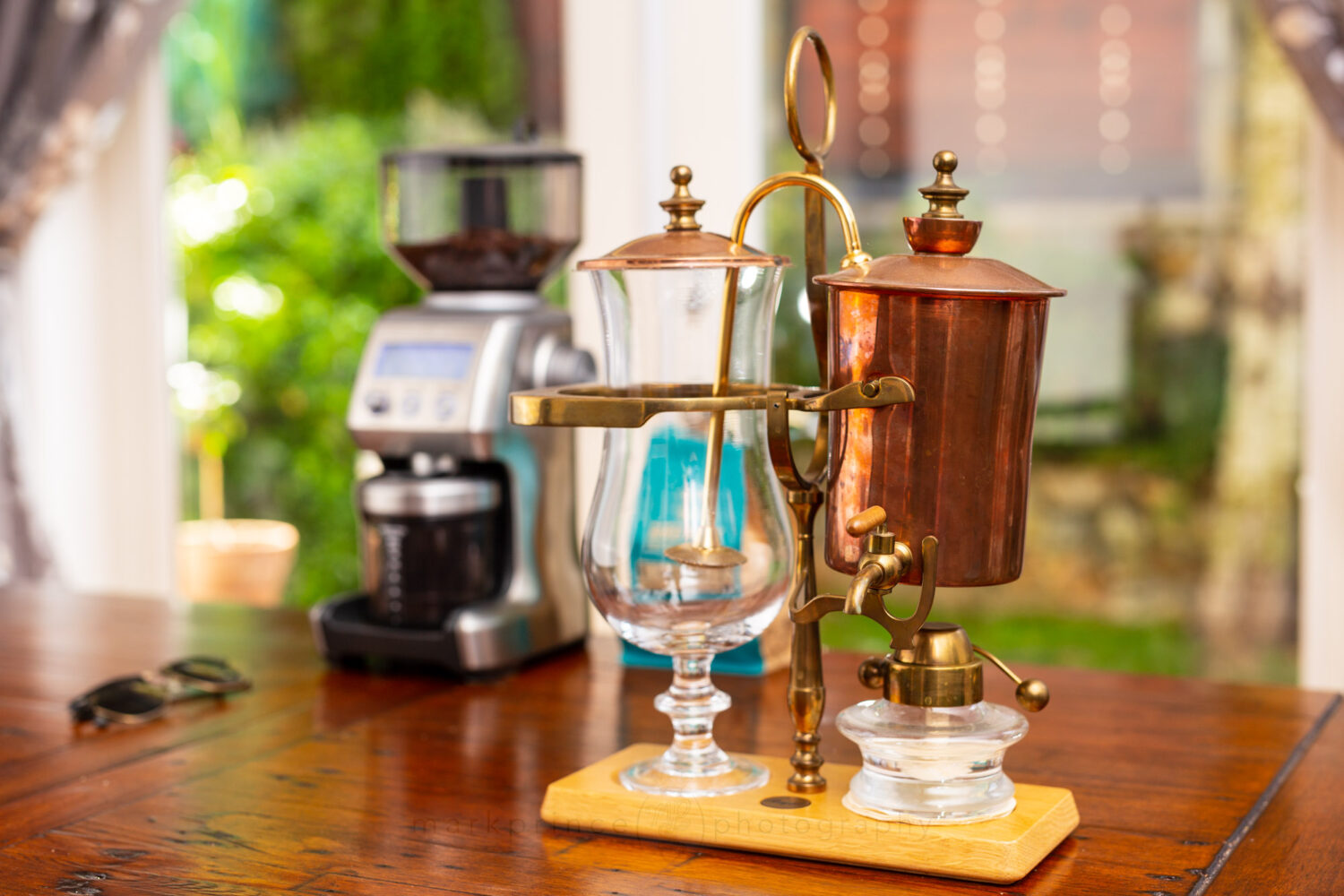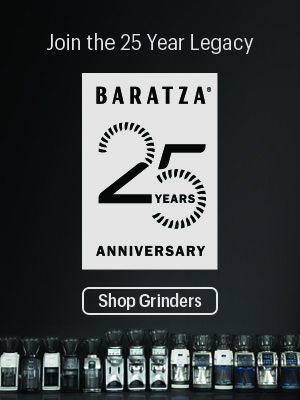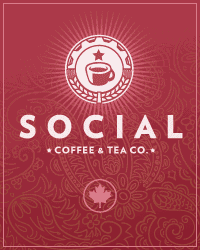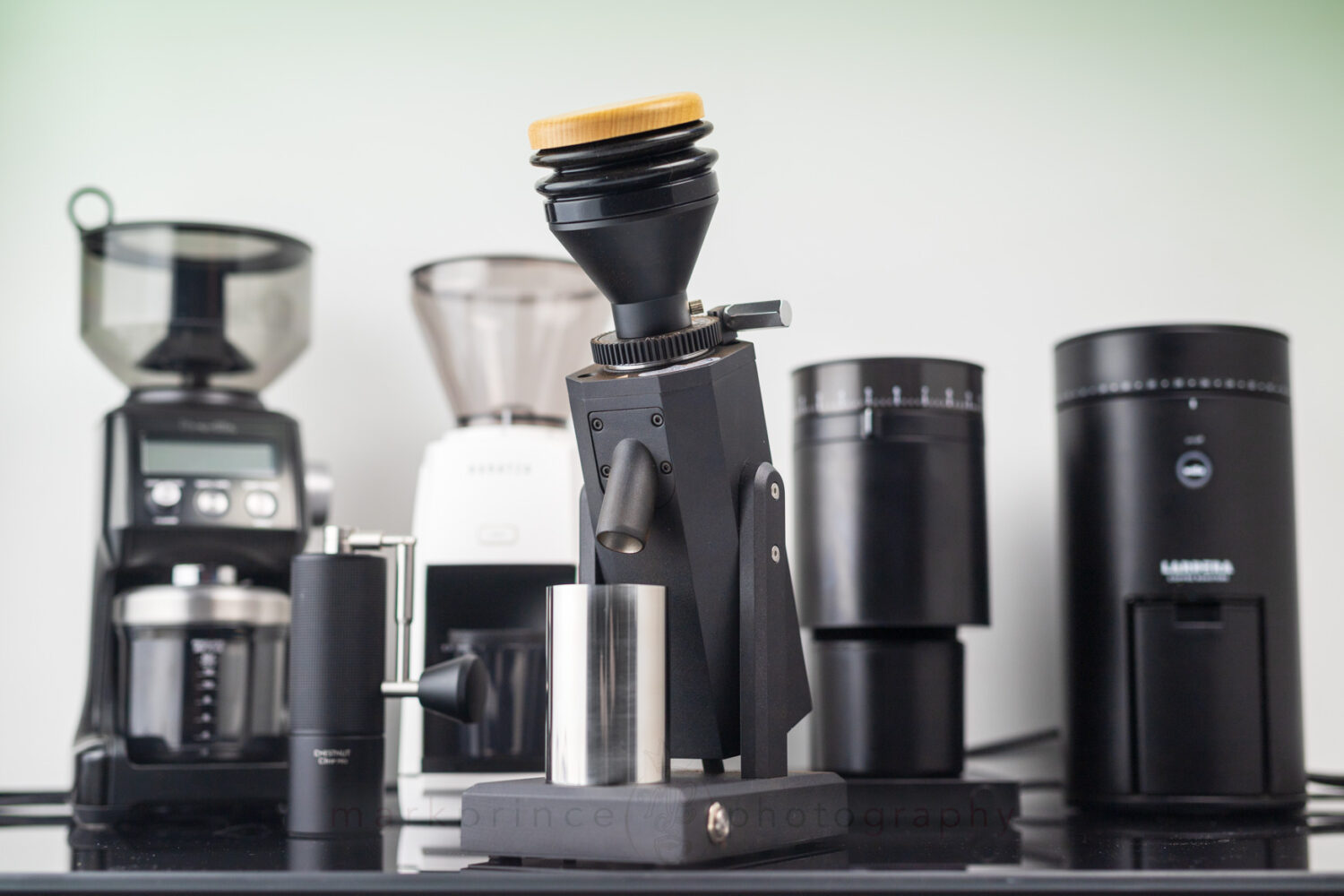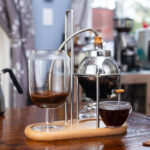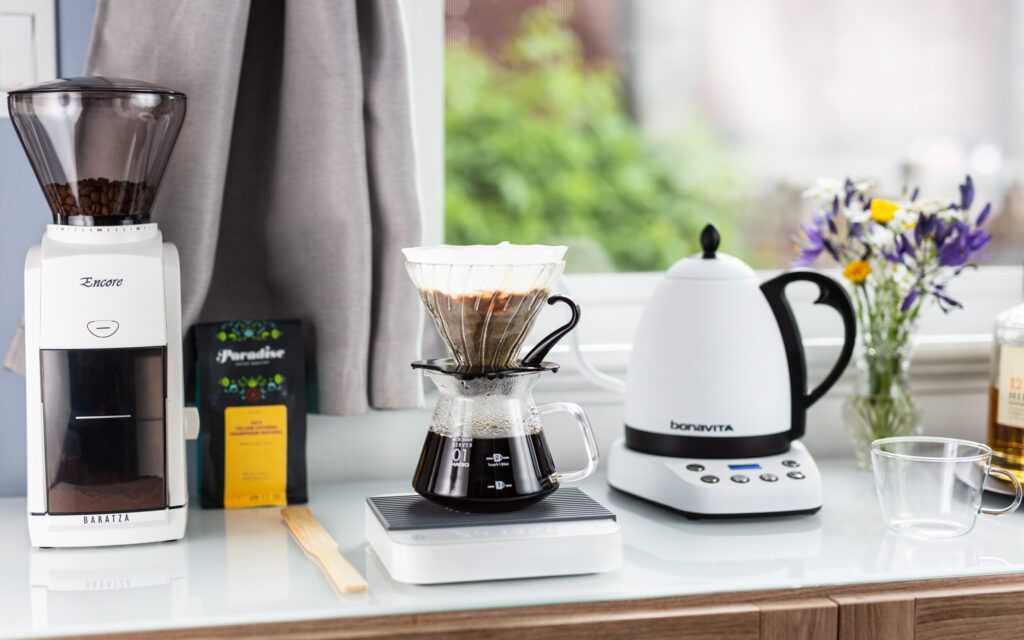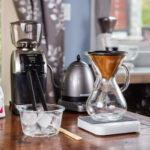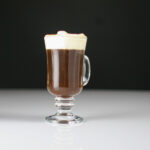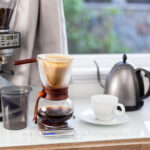Coffee is a wide ranging beverage that human beings have been exploring, modifying, and enjoying for almost 1,000 years. Think about that!
There’s literally thousands of ways to enjoy the coffee plant in all shapes and forms, but the most common way is to remove the seed (bean) inside the coffee cherry when it is ripe, process it, roast it, grind it, and brew it. Even within that scope, there’s hundreds of ways to extract the coffee bean’s liquor, and even more ways to modify it once you handle the basic extraction.
There are a gazillion “XX Things You Should Do Before You Die” lists and articles online covering every topic under the sun. They’re popular because for a long time, they used to provide people with good advice on finding interesting and often obscure things to try and do and enjoy. People love discovering new things, especially about the hobbies they have close to the heart. But like everything else online these days, these lists have, for the most part, become nothing more than click-bait to get your eyeballs on a website, generating income for the company or person publishing them. The vast majority of these lists these days are AI generated.
They literally serve no good purpose, other than to generate the publisher some income.
We’re not like that at CoffeeGeek, and back in 2022, we published this content originally almost in spite of the AI-generated clickbait out there. The difference was, all our recommendations are written by real people, with real experience in the finer (and more obscure things) in coffee. Ironically, these blog posts became very popular when they were first published, showing people still love reading these kinds of lists.
So we decided, with our 2024 redesign, to update this resource and publish it as a proper guide. We are breaking the list into three categories: Drink Builds, Brewing Methods and Devices, and Specific Coffee Types. There’s no particular order, but all of these (with maybe the exception of the Beloya Coffee and finding a Krups Moka Brew) should be easy to achieve.
With all that said, let’s get into this list! Hopefully you’ll discover more than few different types of coffee methods, drink types, and bean types to explore and discover!
Feature Guide Information
This content was originally published as a three part series in the CoffeeGeek blog in 2022. It has been completely updated and re-written for our website in 2024, and set up as a feature guide. We spoke to experts, followed up on some of the more rare types and confirmed the availability of everything (including the German-only Moka Brew, and the fire-ravaged Ka’anapali coffee).
Subscribe to
Coffee Pulse
Delivered twice monthly, CoffeeGeek's premier newsletter dives into a specific coffee topic each issue. The Pulse also occasionally features contests and giveaways. Subscribing is free, and your personal information is never shared.
By submitting this form, you are consenting to receive marketing emails from: CoffeeGeek. You can revoke your consent to receive emails at any time by using the SafeUnsubscribe® link, found at the bottom of every email. Emails are serviced by Constant Contact
The Categories25 Drinks to Try
We broke the list down into three categories: coffee based drinks, brewing methods and devices, and coffee bean types to try. There’s no rhyme, reason, or order to the list as you scroll down the page, but we do have them all listed by category right here, if you want to quick-jump to the ones that hold the most interest.
Drink Builds
Brewing Methods
DrinksTraditional Macchiato
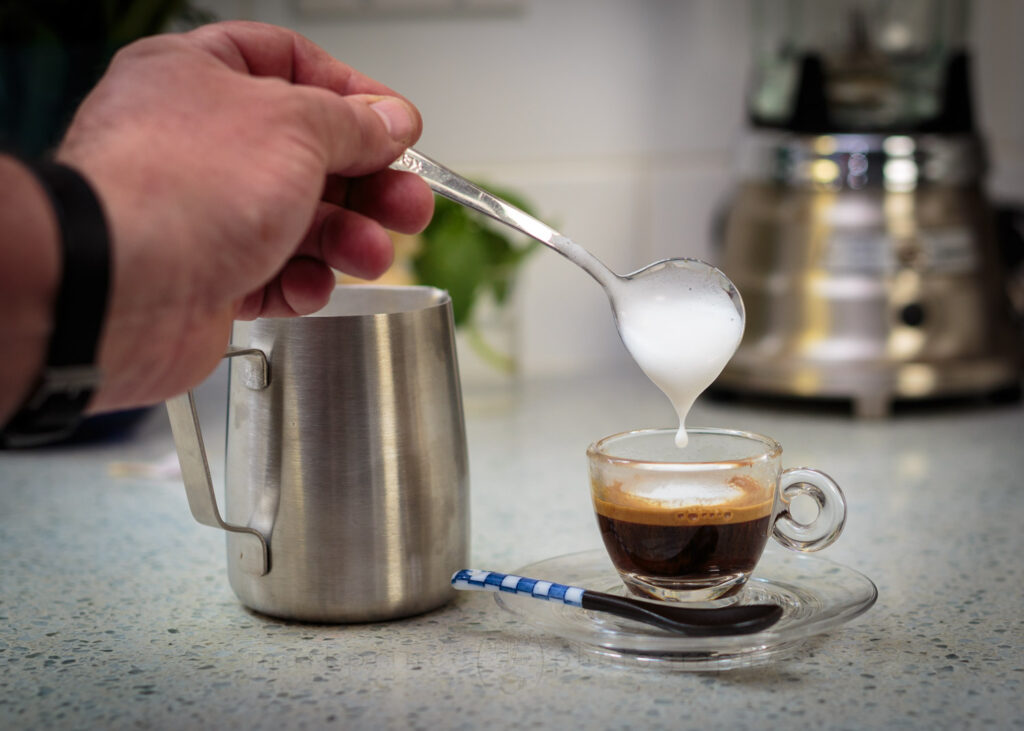
A traditional macchiato has a very different taste balance, compared to the usual latte-art covered versions you find in cafes in the USA and Canada.
Starbucks has done their darndest to destroy the meaning of the word “macchiato” in the world of coffee. Nearly 25 years ago, they started selling 12, 16 and 20oz coffee drinks with chocolate and cream they called the “Starbucks Macchiato”.
That’s not what a macchiato is, and because of Starbucks’ popularity, many people don’t know that.
What’s interesting is how the macchiato at high quality cafes has evolved differently from the drink that you would get in Italy for the past five decades or longer. In the US and Canada, if you order a macchiato, you’ll most likely get a double shot of espresso with an equal amount of foam and steamed milk on top, sometimes with latte art poured. At CoffeeGeek, we call that a “modern macchiato“.
But it is not a true macchiato. A traditional macchiato. You should try one, because it’s a unique drink experience, and one that won’t shove your blood sugar content to the stratosphere like the Starbucks variant would. A true macchiato is an espresso shot “marked” (macchiato means marked in Italian) with a dollop of foam.
CoffeeGeek has a full guide to the traditional macchiato, and we give some background on how this drink came to be.

Brew MethodCloth Pour Over
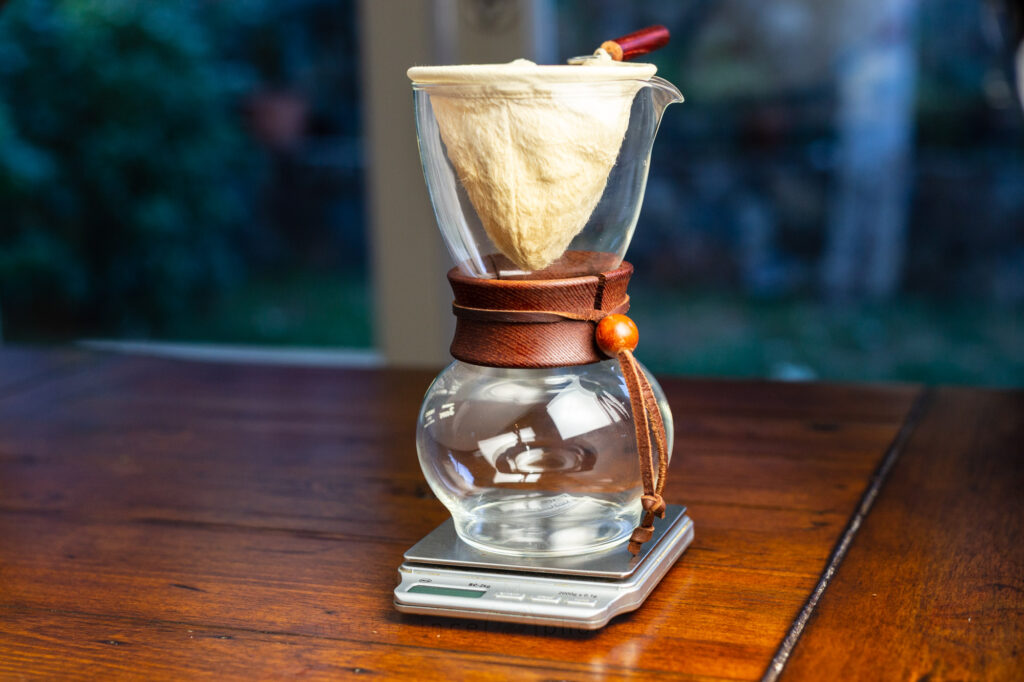
A Hario Cloth Pour Over Coffee Maker
If the only pourover coffee you’ve ever had is with paper filters, you have no idea what you’re missing out on by not using a cloth filter system.
Paper filters deliver a nice clean cup, but block some of the aromatic and flavor enhancing oils that ground coffee puts out when it is being brewed. Cloth lets more of these oils, fats and lipids pass through, yet still delivers a very clean cup. The result is a richer, deeper, and more nuanced cup of coffee.
Cloth filter as a brewing method has been popular in Japan for decades (paper filter pour over only took off with the introduction of the Hario V60 in the 2000s), and it was the primary filtration method used in coffee brewers from the early 1800s right through to the 1970s. The trick with cloth filter brewing is you have to be really keen in cleaning the filter properly to get constantly great cups.
Hario makes a cloth dripper set up in a 3 cup and 5 cup model. There’s also really inexpensive cloth filter holders you can use with any existing pour over filter if you want to give it a try.
As usual, CoffeeGeek has a complete How To on Cloth Pour Over.

BeansCup of Excellence Winner

All the coffees entered in the 2009 Brasil Cup of Excellence, sent to roasters / buyers to try and sample on their own.
Want to taste the literal best coffee in the world? Then you want to taste a Cup of Excellence award winner.
The Cup of Excellence, founded by George Howell and others at the tail end of last century, has become the pinnacle of small-producer coffee excellence in every country it is run. Think of it as the “Olympics of Coffee” in each of the countries hosting the event, with highly skilled judges flying into the countries to blind taste judge the submitted coffees.
The competition is geared towards small producers, and seeks to identify the best coffees grown in each of the countries hosting. After the competition, an auction is held, and coffee roasters around the world bid on these best of the best coffees. Once they get their lots (and it’s usually way less than 100 commercial bags), they will roast up the coffees and sell them to the public.
You can find out a lot more about the Cup of Excellence (CoE) program here, including information about all the winning coffees each year, and what roasters end up buying the top lots. Currently, the following countries host CoE competitions: Bolivia, Brazil, Burundi, Colombia, Costa Rica, Ecuador, El Salvador, Ethiopia, Guatemala, Honduras, Indonesia, Mexico, Nicaragua, Rwanda, and Peru.
If you want to see a list of the winners, CoE lists them, but it requires some navigating.
A better way to experience Cup of Excellence coffees is to remember the name and designation, and let your google fingers do the searching for roasters selling their Cup of Excellence auction lot roasted coffee. But be warned: there are some charlatans out there, claiming to sell CoE coffees when they do not. Do your due-dilligence, and if you are ever in doubt, check CoE’s website, or email them to confirm if a roaster is indeed the owner and seller of specific CoE lots.
This is your one sure way to try the best coffees on the planet.

DrinksCappuccino
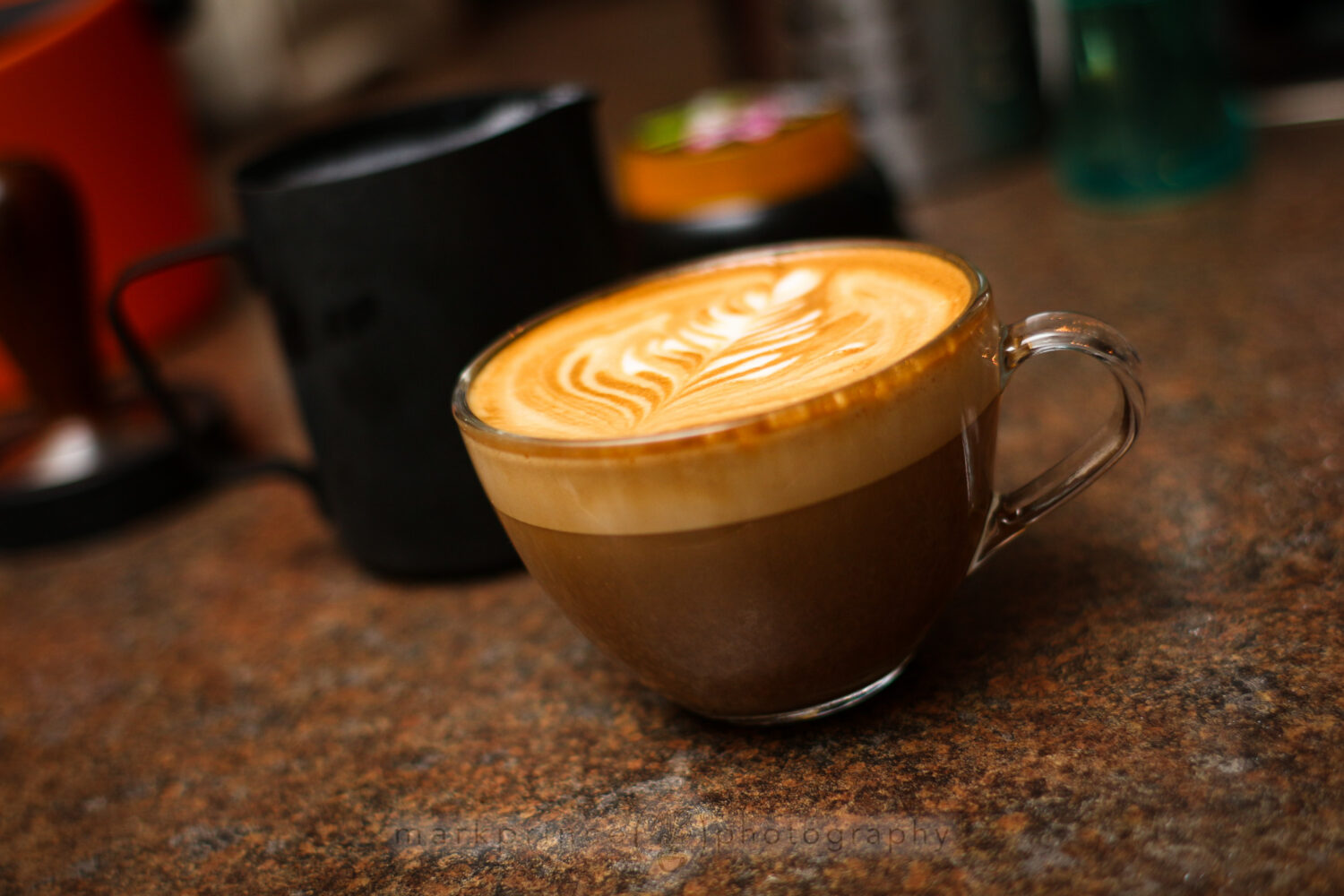
A proper cappuccino is a drink of thirds. Latte art on top is rare, but do-able. Note the level of foam in this cup.
Chances are, you’ve had a cappuccino before in your life. Perhaps even one just this morning! But have you had a proper cappuccino? A proper cappuccino is a small drink – less than 6 fluid ounces total – that is a “drink of thirds”.
It is built upon a double shot of espresso, which should be about 45-60ml in size. Next, milk is steamed with air introduced via a steaming wand to both heat and “stretch” the milk, which is just a barista term for creating milk froth. The goal is to double the visible volume in a steaming pitcher, while not getting the steamed milk past 150F.
If you have the skill, you should be able to ‘free pour’ the combination of heated milk and milk froth into the cappuccino cup containing the espresso, and end up with a drink of thirds. When you do free-pour, it is important to let the drink settle for a minute or two for the foam to firm up and form the top cap.
If you cannot freepour equal measures or don’t want to be bothered, there’s no shame in using a spoon: first, use the spoon to hold back any milk foam while you pur about 2oz of heated milk into the cup. Then use the spoon to spoon out another 2oz (visual) of milk foam on top.
That is a proper cappuccino, and they are delicious! CoffeeGeek has a detailed How To Guide on making cappuccinos, which is worth a read! (nb: our Cappuccino How To is getting a full update later this year).

Brew MethodSiphon Coffee
Siphon Coffee (often called vacuum brewers in the USA) hasn’t quite had the revival in interest that pour over coffee has enjoyed in the past decade. And that’s quite the shame because it is a magnificent brewing method. Some around here feel it’s the best non espresso brewing method you can currently brew with.
One of the things the CoffeeGeek How To on Siphon Coffee makers taught me is it was the most popular brewing method in the United States between 1930 and 1950. I can see why. Siphons are fascinating to watch, and the cup they deliver tastes incredible.
I got my first siphon off Amazon (one of those usual cheaper models made in China). I still use it at least once a week (it is built surprisingly well). The biggest drawback to siphons is the cleanup. Especially the cloth filter. Some say just keep a rinsed filter in a glass of water in the fridge between uses (ewww!); me, I drop it in a hot cup of water and a bit of espresso cleaner between uses, giving a thorough rinse after.
Once you experience the speed, theatre, and taste of a siphon coffee brew, you too might be hooked for life! Our blog contributor Allison sure was, and she detailed her experience here.

BeansGeisha Coffee

Giesha coffee varietal in Panama after harvest.
Back in 2005, the Peterson family of Hacienda Esmeralda set the coffee world on fire at the Best of Panama coffee auction, introducing an Ethiopian varietal of arabica coffee called “gesha” (which was quickly bastardized into the word “geisha”) that completely blew the minds and palates of the judges. It didn’t taste like any coffee they had ever had. Floral. Delicate. Nutty. Chocolate. Honey. Black tea. Sweet.
By the second year, roasters were bidding this coffee into the $100s of dollars per pound. It hit $350 a pound in 2007, and as recently as 2017, it auctioned for an insane $700 per pound in the Best of Panama competition.
Since that time, other coffee farmers and investors have obtained their own Geisha seedstock, and grown it in other parts of Central America. Some have been hits, some have been misses.
Most of the Geisha type coming out of Panama tastes nearly as good as the Esmeralda, albeit at much lower prices (still well over $100 a pound retail roasted price). The Geishas grown in Colombia and El Salvador also have very unique and interesting taste profiles, and can sometimes be found for under $45 a pound retail roasted cost.
As always, there are a lot of charlatans out there, selling non-Geisha coffees as “Geisha”, looking to rip you off. Use your due diligence, research, and buy from a reputable roaster who can document their purchase of this rare and expensive coffee type.
It is a “must taste” coffee for most serious coffee aficionados.

DrinksCaffe Corretto
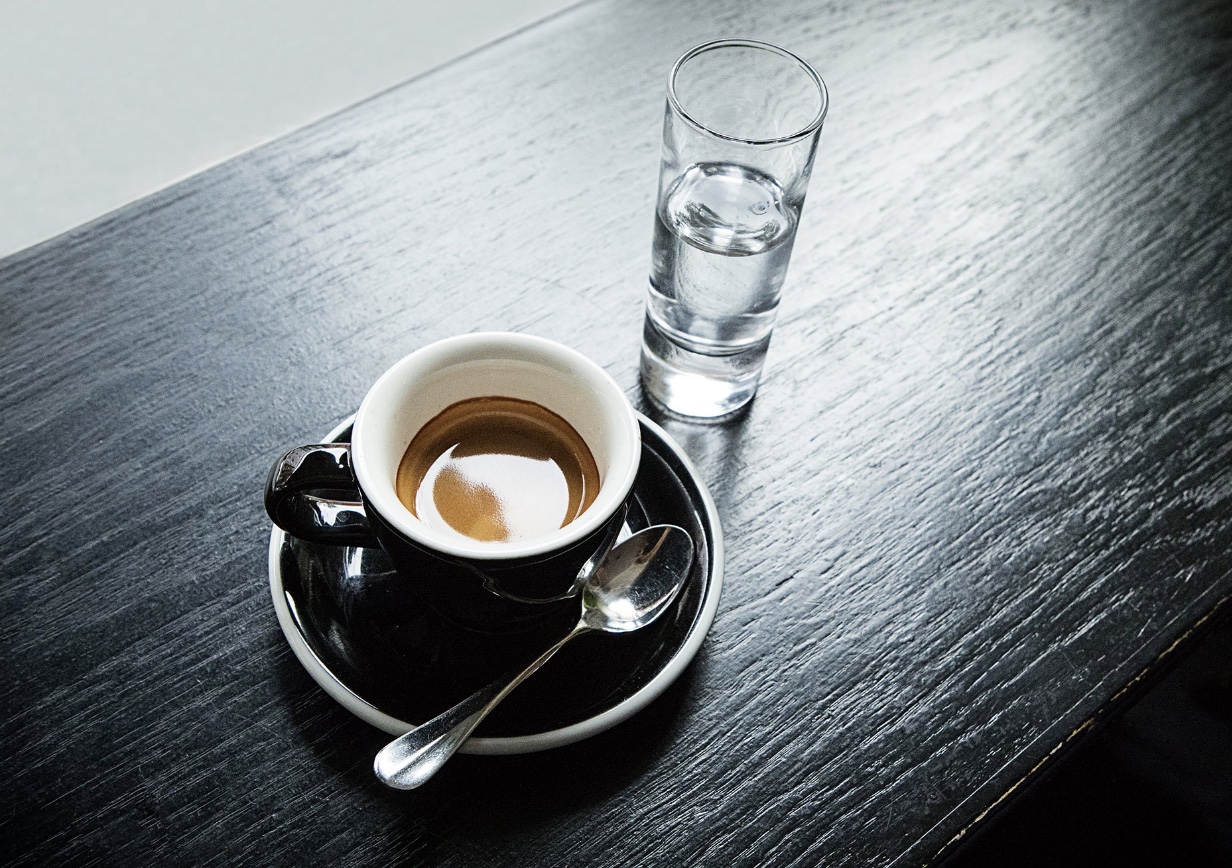
Espresso served with a shot of grappa.
Oh my gosh, I love Italy. One of the reasons why is you can get a “no questions asked”, “no second look’ response if you want something alcoholic at 7:15am. All you have to do is go into a cafe and order a caffe corretto! That is literally a “corrected espresso”.
What is it? It’s a shot of espresso served up with a shot of grappa, a kind of Italian vodka, made from grape skins.
How is it served? You get your demitasse of espresso in a porcelain cup, and a shot glass of grappa served next to it. I don’t know what it costs these days, but when I was in Italy, an espresso was 1 euro, and a caffe corretto was 2 euros!
There’s also a proper way to drink it, if you’re so inclined.
First, drink half the espresso. Then take half the grappa as a straight shot. Then add half of the remaining grappa to the espresso, and drink that.
Next, take the last bit of grappa and add it to the empty espresso cup, swirling it around to collect all the spent crema. Once the last drops of grappa are mixed with the remains of the espresso, drink that. Done!

Brew MethodCowboy Coffee
The method commonly referred to as “cowboy coffee” today is actually one of the oldest brewing methods ever devised for coffee. It’s called cowboy coffee because it became synonymous with the Old West.
Cowboy Coffee is the name for a full immersion coffee brewing method with minimal filtration (usually a coarse hole metal filter in front of the spout on a metal kettle). Very coarse ground coffee is used to brew, and typically the pot is left on a heat source for long periods of time, though the brew is technically “complete” after about 10 minutes.
When people want to get more fancy with the brewing method, cold water is added after a 7-10 minute steep time to slow down any remaining extraction.
When done right, cowboy coffee can taste quite good, but it will have the most “coffee sludge” in the bottom of the cup of any brewing method. CoffeeGeek doesn’t have a full guide yet, but the process is easy to replicate at home:
Start with water heating up in a pot or metal kettle. When it is around 150F (ballpark), add 1 heaping tablespoon of coarse ground coffee per 250ml (8oz). Let the kettle or pot come to a rolling boil, then remove it from its heat source. Add roughly 50ml of cold water for every “cup” you brewed to stall the extraction process, and cool the coffee down enough to drink. Pour gently into cups. Most of the ground coffee should stay in the kettle, with a thick liquid ending up in the cup.
Enjoy. Around a fire.

DrinksNitro Cold Brew
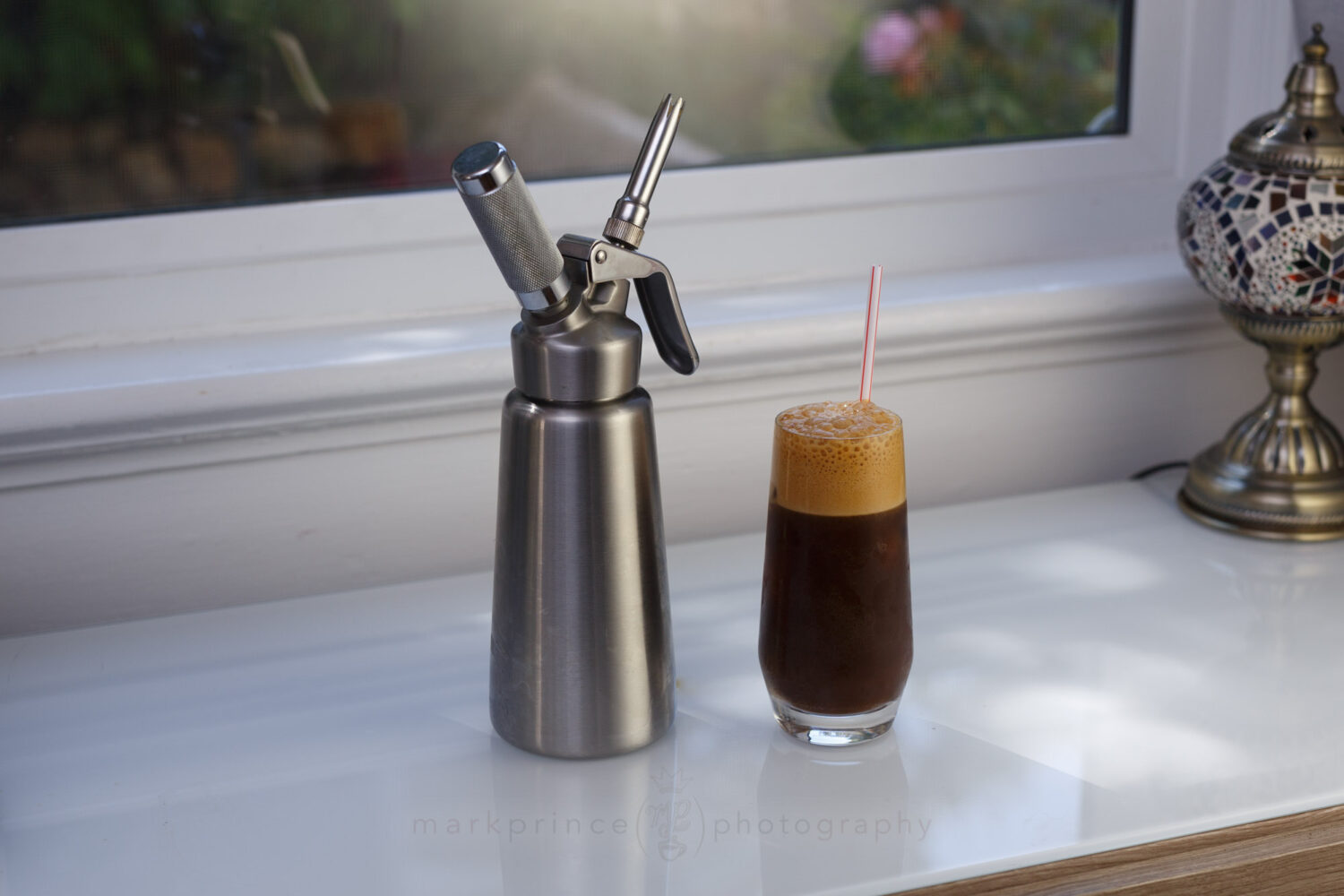
Nitro cold brew, made at home, using a creamer whipper bottle and nitrogen capsules.
One of the more interesting methods for serving up cold brew coffee is infusing it with nitrogen. The gas imparts a sweeter, creamier profile to coffee and can often be enjoyed without any sugar because of how nitrogen boosts the balance of the drink.
Some top tier cafes serve up nitrogen infused cold brew on tap, so find one and give it a try.
Or make it at home. You need either a soda siphon bottle that takes CO2 capsules (though you’ll be using nitrogen capsules), or a whipped cream whipper canister. You also need N2o capsules for this.
Use your favourite cold brew method to make coffee (we like the Japanese Iced Coffee Method), then pour the completed brew into either the soda siphon or the whipped cream canister. Seal things up, and apply the nitrogen capsule to infuse the coffee. Let the bottle sit in the fridge for at least 10 minutes to let things settle.
Then get ready to dispense. It can be quite foamy, so be really gentle on that canister trigger. If using a soda canister, dispense normally; if using a whipper canister, you know you have to hold it upside down to dispense.
This summer, CoffeeGeek will have a full and complete how to on this method.

Beans"Monsooned" Coffee
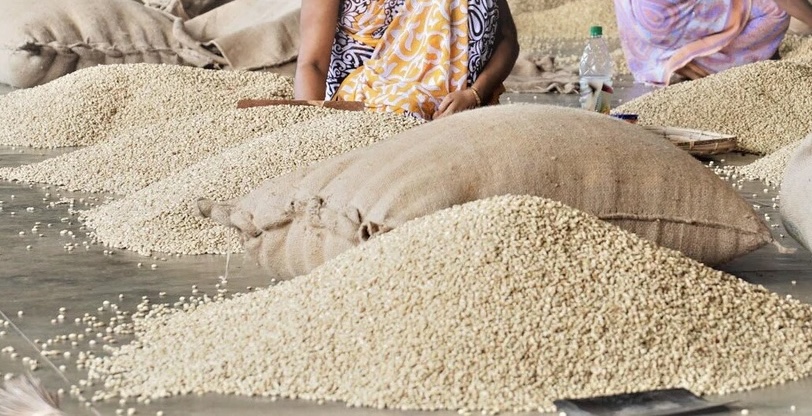
Mounds of coffee in an Indian warehouse, after getting their monsooned treatment.
There is a coffee that is purposely exposed to nature’s conditions for several months (as a green, unroasted bean), before it is packaged up, and shipped to roasters around the world. That coffee is from the Malabar region of India and is called “Monsooned Malabar“.
No kidding. Fully exposed mounds of green coffee, and big 60kg commercial bags of green coffee are stacked in warehouses after they’ve been processed, and quite literally, an entire side of the warehouse is opened up to expose the bags to the humidity and storms of a 3 month monsoon season.
This has a very unique effect on the beans. They both pale in colour (unroasted monsooned beans are a light tan color), and also are swelled up a bit from the exposure to humidity and even rains. This process dramatically reduces the acidity in the coffees, and gives them a very earthy and pleasantly herbaceous flavor profile. There is not other coffee on the planet with a similar taste profile. And a little side note: one of the main importers — Josuma Coffee — of this special bean was one of the original advertisers on CoffeeGeek back in 2002-2004!
This coffee is so unique, it became a staple in Espresso Vivace’s two signature blends – Dolce and Vita – and continues to be so. Is that name familiar? It should be: David Schomer, the owner of Espresso Vivace in Seattle is the fellow who introduced latte art to the USA. That’s right: the first lattes ever to feature latte art had monsooned malabar in the espresso blend used to build the drinks!
This is indeed a special and unique coffee. Find some from a reputable roaster, and give it a try!

DrinksIrish Coffee

Irish Coffee with pourable heavy whipped cream is heavenly.
There’s a good chance you’ve had an Irish coffee, but there’s an equal chance you haven’t had a proper one, one done via the original recipe and method, and that’s why it is on this list: you must have a proper Irish Coffee at least once in your life!
One of the most common mistakes most bars and restaurants that offer Irish Coffee do is with the cream. Some think the cream is Bailey’s Irish Cream (it is not), others think topping it with canned whipping cream is the way (it is not).
The key to a proper Irish Coffee, on top of using a good Irish Whiskey, is the cream used. It should be hand-whipped just before building the drink, and left somewhat short of “stiff”. That means it is thick but pourable. No sugar should be used in the cream either. The proper application of sugar in an Irish Coffee is in the hot liquid itself, before the alcohol is added.
CoffeeGeek has a very detailed how-to on Irish Coffee, including some history, and a spicy variant for you to try.

DrinksFlat White
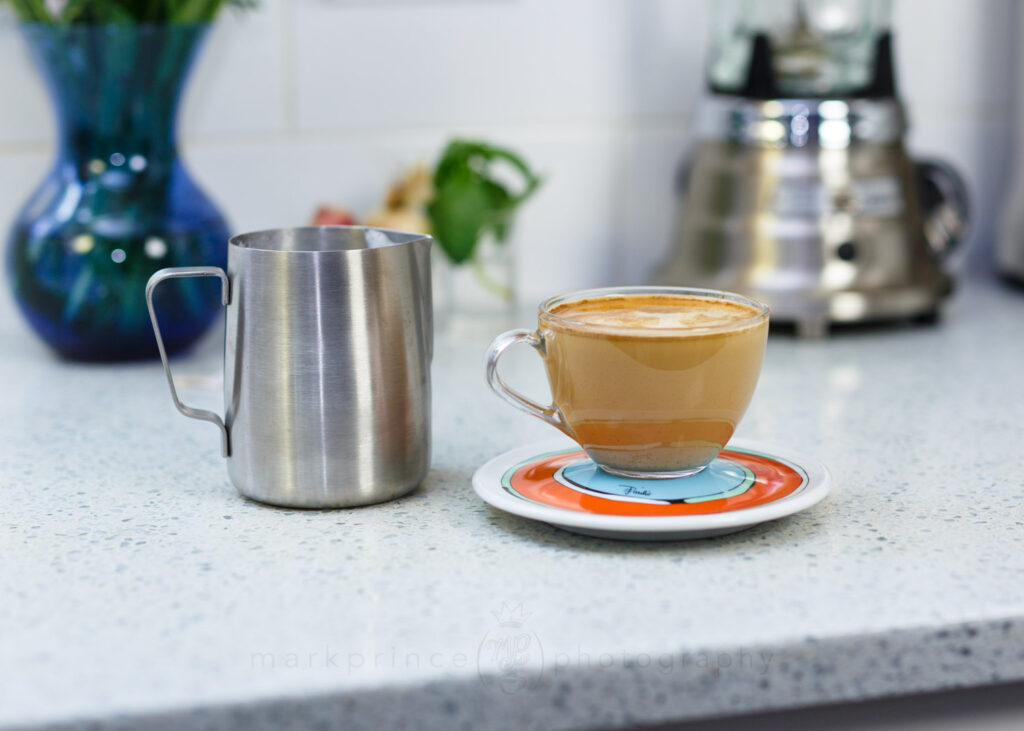
The flat white: kind of a mini latte, with better balance between the espresso and steamed milk.
If you want a latte with more balance, then you have to try a proper flat white coffee beverage. The flat white originated in Australia (or New Zealand, depending on who you ask), and it started life as a beginner drink for people who don’t like coffee very much. (it’s true!)
To get one, you introduce steamed milk and the smallest amount of foam to a double shot of espresso.
Sounds like a latte, right? Well, it is, except for one thing: the milk to espresso ratio. In a flat white the ratio is a lot tighter than it is in a latte. Probably because it’s served in a cup that is smaller than 8 ounces. In fact, the drink has evolved quite a bit to really fine tune the milk to espresso ratio so that both end up complimenting each other. The drink size is never more than 5 or 6 ounces now, and is usually served in a glass instead of a porcelain cup.
Like a lot of these drink builds, CoffeeGeek has a (basic) How To on the flat white.

Brew MethodBalance Brewer
Within a few years of the invention of the siphon coffee brewer (itself invented around 1840), some bright minds looked for ways to improve and automate it. They took the siphon design of a globe stacked on top of another globe, and married them with a British designed coffee maker of the era, called the Naperian.
The result was a side by side “automatic” brewer that used the weight of the heating kettle to control the brewing time for coffee. It was – in effect – the world’s first commercially successful “automatic” coffee maker.
The balance brewer design does have some limitations – the brew time is far too short if you leave it in full on auto mode – but you can compensate for that by simply holding the kettle up manually for another 60 seconds or so.
Jus as much theatre as it is function, the balance brewer can deliver a fantastic cup. On Amazon these days, you can find Chinese made, functioning replicas of these brewing devices, usually under $100.
CoffeeGeek has a detailed How To on balance brewers, check it out.

BeansMaragogipe Type

Maragogipe roasted coffee, on the left, is often double or more the size of most coffee beans
Elephant bean coffee.
That’s what this particular coffee is often referred to as. The maragogipe bean, a very rare mutation of the Typica Arabica bean brought to Brasil in the 1600s, was discovered in 1870. It is the largest commercially sold arabica coffee bean in the world, and the ‘parent’, as it were, of a slightly smaller, and much more readily available specialty coffee: the pacamara varietal found in Central America.
You would think being so big would make things easy in life, but just the opposite is true for the maragogipe coffee. Everything about it is big: the beans, the cherries, the trees, and the land it needs to grow on: all of that reduces the yield and makes it less attractive for farmers to grow. It is also much more susceptible to coffee diseases and pests than other varietals are, again lowering yield quite a bit. For this reason, El Salvador, which used to grow maragogipe, ceased all production in the 195os, switching to pacamera as the substitute (nb, some microlot farmers in El Salvador have begun growing it again in the last 10 years).
Roasters don’t like it much either. It roasts quite different when compared to most arabica coffee, and the super large size doesn’t work with some standard roasting setups. Heck, even some coffee grinders don’t like it: the beans are so huge, they sometimes won’t feed down past anti-popcorning devices or first guards in grinders to actually get to the burrs.
For all these reasons, it is a rare, rare coffee. And it is also a fantastically delicious coffee, especially if naturally processed using a fermentation method. The bean seems to pick up more natural sweetness while growing, and that comes out through a honey or fermented processing method.
As with all our coffee recommendations, do your research, find a reputable roaster, and buy this coffee in season to give it a try. It is one of the world’s more rare coffees, and very tasty.

DrinksAffogato
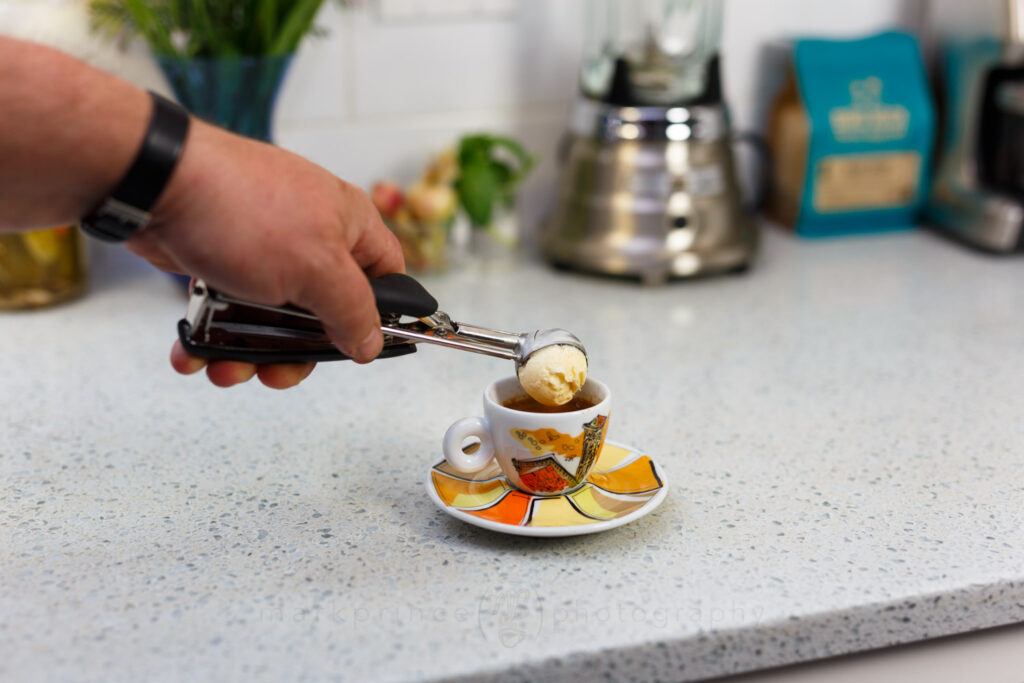
Melon ball scoops work great for affogatos
This is a gem of a tiny dessert offering that everyone who loves coffee should try at least once. I always found it fascinating it was the most popular “dessert” espresso drink served in the USA before the frappuccino came along.
The build is pretty straightforward and easy to do at home. As usual, you start with a double shot of espresso. Next, add a small round scoop (the size of a ping pong ball or smaller) of ice cream or gelato (vanilla does fine here) to the top of your double shot. And enjoy!
The beverage cools down to luke-warm pretty quick, so i like drinking it fairly quickly and finishing off by eating the shrinking ball of vanilla ice cream.
If you want the ice cream more mixed with the espresso, just brew your double shot right onto the ball of ice cream.
We will be featuring a How To on the Affogato later this spring.

Brew MethodMoka Brew
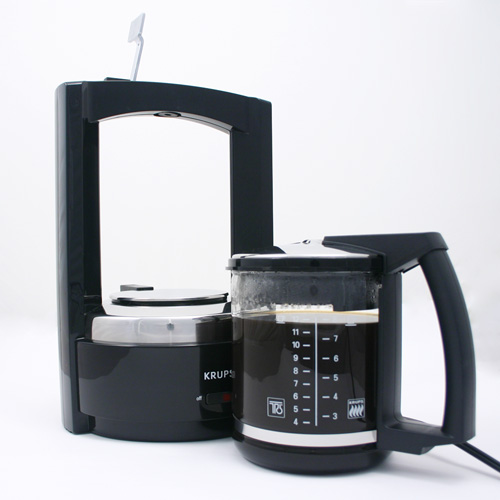
The Krups Moka Brew, after brewing a full 1.2l pot of concentrated coffee.
Not an actual “moka pot coffee”; instead it is the name of a brewing device that’s been made by Krups for the German market for many decades: the Krups Moka Brew. (German Amazon link).
At times, Krups has sold a 110V version of this device in North America, though currently, they do not. You can still try to find it on auction websites like eBay, and they do pop up from time to time. Our senior editor loves the brewer so much, he bought five of them when they were last sold on Amazon in Canada. He claims to still have them unopened, in boxes, in storage. He’s weird.
This brewer is a cross between a moka pot and an automatic drip brewer. The resulting beverage is very intense and unique. It is also very simple device in overall operation, and is built to last. The most fragile part is the glass carafe. Everything else is simple and bulletproof.
Perhaps the Krups Moka Brew’s best use is as a building block for iced coffee. The way it operates produces a very concentrated brew of coffee in large volumes, and this is a great candidate for adding a lot of ice to for a flavorful summer brew.
CoffeeGeek has a review on this intriguing brewing device, you should check it out. This is definitely one of the unicorns on our list, but if you ever get a chance, taste the brew from this unique device!

BeansMocha Java
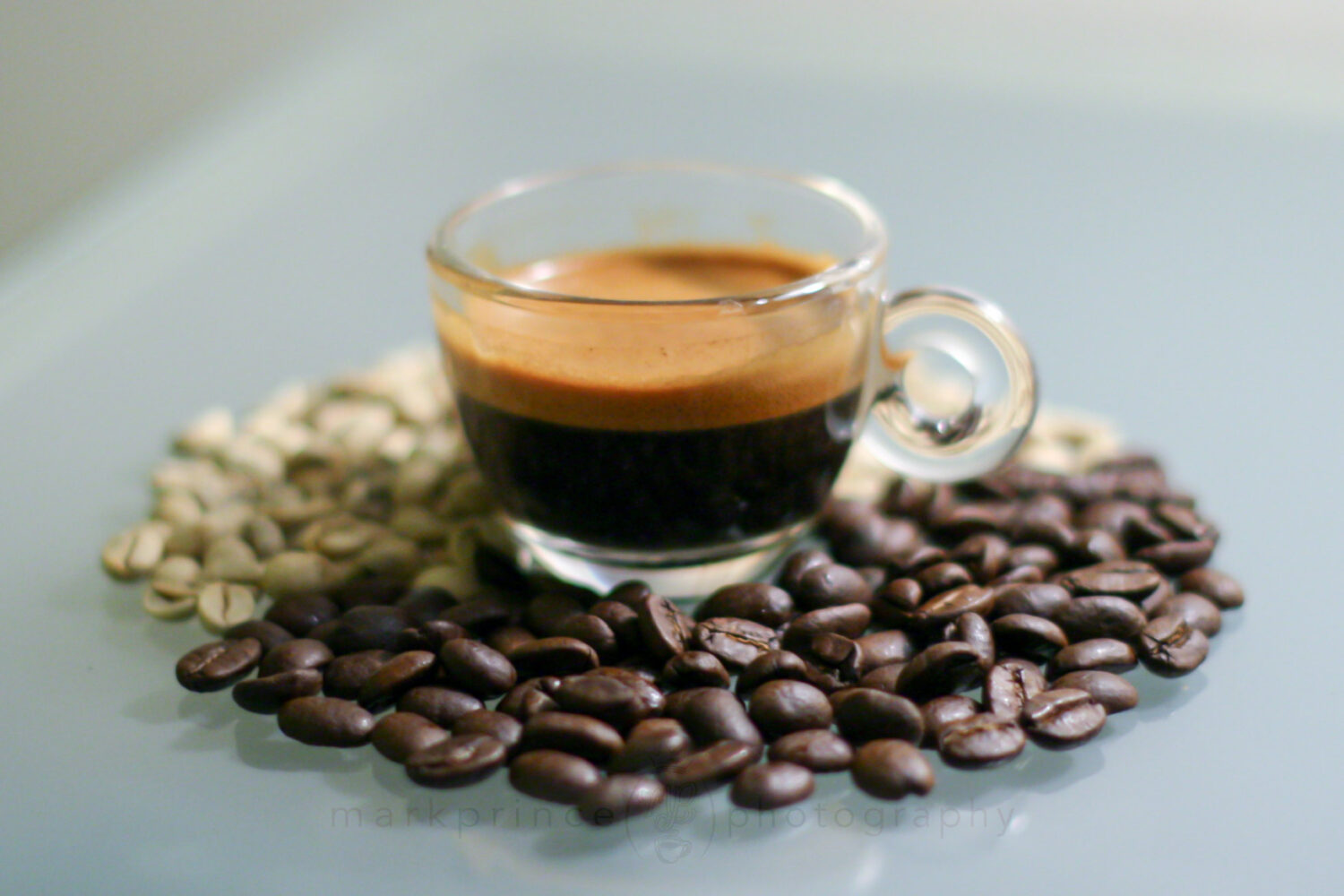
A mocha java blend that we roasted ourselves from a high rated Yemeni Mocha stock and Indonesian Java. Made an excellent espresso blend.
At some point, you owe it to yourself to try the world’s oldest coffee blend. A blend of Yemen Mocha with Indonesian Java.
But first, a historical note. At some point in the last fifteen years, some blogger or amateur researcher wrote online that the Mocha Java blend originated in the 17th century (that is, the 1600s). Now, if you do a google search for “mocha java origin”, almost all the articles online parrot this “fact”. Indeed, some websites tout this goes back to the 15th century (!!!!) as happy sailors stretched their legs between Indonesia and Yemen, picking up both coffees along the way, and mixing the bags on ship.
This is absolutely, positively not true. First of all, Indonesian Java wasn’t even developed until the early 1700s (the first seedstock travelled from India to Jakarta, Indonesia in 1696) and for the next 150 years, the Dutch fiercely protected their Java source of coffee to control the overall coffee market. The Dutch also had no access to Yemeni coffees during this time.
In the meantime, Yemen was already the second oldest producer of coffee (after Ethiopia), all of which sailed out of the port of al-Mukha (hence the Mocha, or Mokka name). This port, British controled, served the Arabic world their coffee staple of choice from 1500 through the late 1800s. Some of the Yemeni coffee made it to Britain, and became the main coffee available in Britain for centuries. The Brits, like the Dutch, were fiercely protective of their commercial coffee sources. It wasn’t until the 1800s that most Europeans even got a chance to drink “Mocha” coffee outside of the British Empire.
As the world moved more and more towards global commerce, controlled more by commercial companies and less by governments, green coffee brokers were able to set up companies that offered coffees from different regions and nations. William Ukers speculates that this oldest blend of coffee (blended in green bean format), originated in the mid 19th century because of enterprising brokers looking to combine the two most famous names in coffee: mocha, and java. One day, we’ll better (and more formally) document this history on CoffeeGeek.
Okay, history lesson over, but it is important to share this, to show just how special this coffee blend is, and why you should try it at least once. Yemeni coffees are known for their acidity and heavy chocolate notes, and Java brought the body, spices and earthy tones to join together is a very complex and rewarding cup.
Lots of roasters today offer a “Mocha Java” blend. Our favourite is the one offered by Dancing Goats, because it is absolutely authentic.

DrinksSpritzy Americano
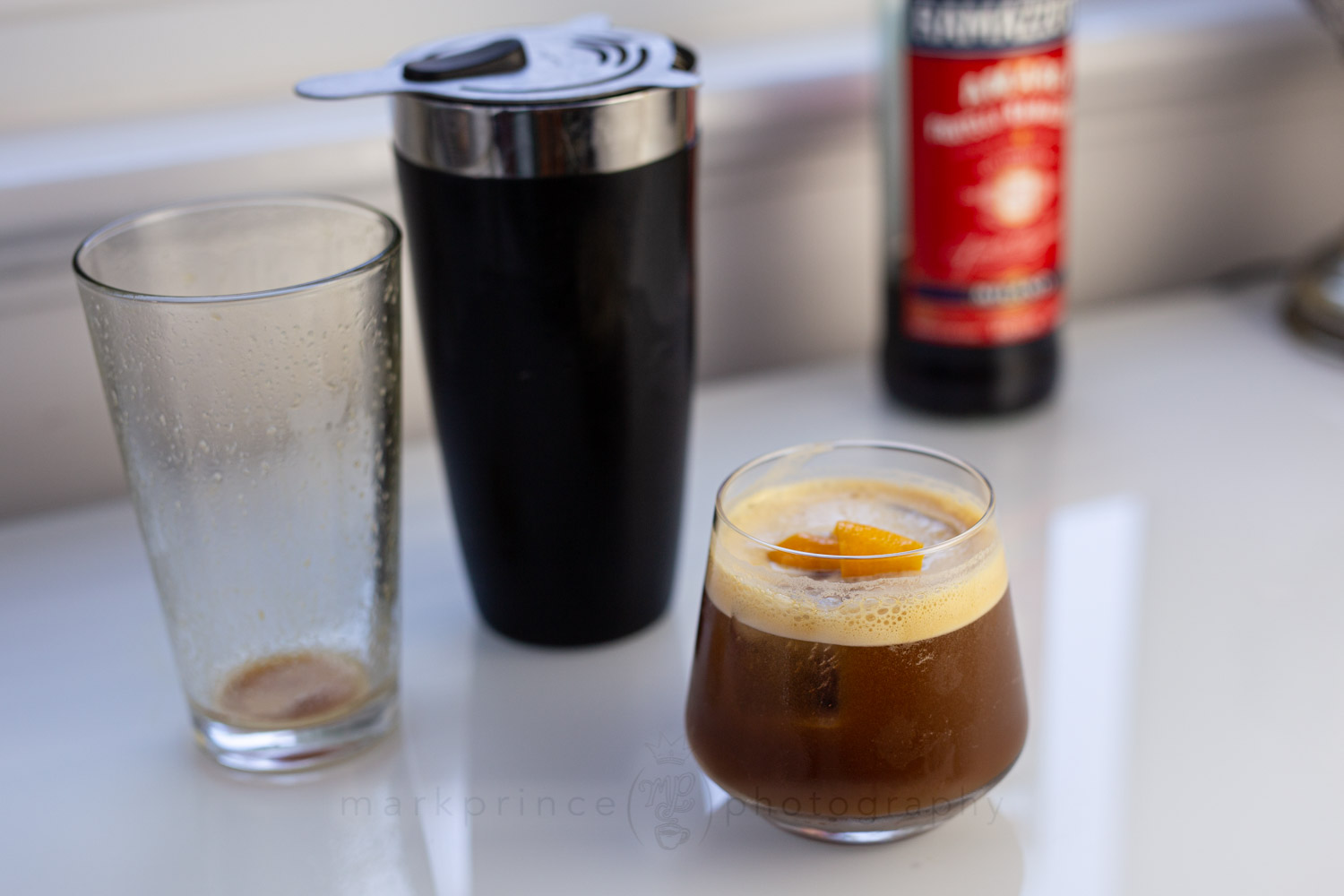
Finally, a carbonated coffee beverage that tastes good!
Orange juice and coffee? And carbonated to boot? What kind of black magic is this? It’s the Spritzy Americano, and you might just be surprised at how good it tastes, which is why it’s on this list!
The build of this drink is a bit complex, and you probably won’t find any bar serving it, so it’s time to make this at home.
- Brew a full double shot of espresso and pour into a martini shaker.
- Optionally, add 30ml (1oz) simple syrup if you want a sweeter drink.
- Add 60ml fresh orange juice to the shaker (fresh squeezed really makes all the difference).
- Add 30ml (1oz) of an Amero style liqueur. We like Ramazotti for this.
- Shake, without ice, to seriously mix the ingredients.
- Add ice, shake more until the martini shaker is frosty.
- Split the mixed drink between two glasses with ice.
- Add 120-150ml (4-5oz) of ice cold soda water to each glass, slowly (it will foam up).
- garnish with an orange peel.
Be really careful adding the soda water, as it will foam up quite a bit.
This drink is nice and balanced, without the simple syrup because of the sugar boost from the amaro. If you want it alcohol free, definitely add the simple syrup to give it good balance, especially as a chilled drink. (Adopted from a Bon Appetit Article).

Brew MethodTurkish Coffee
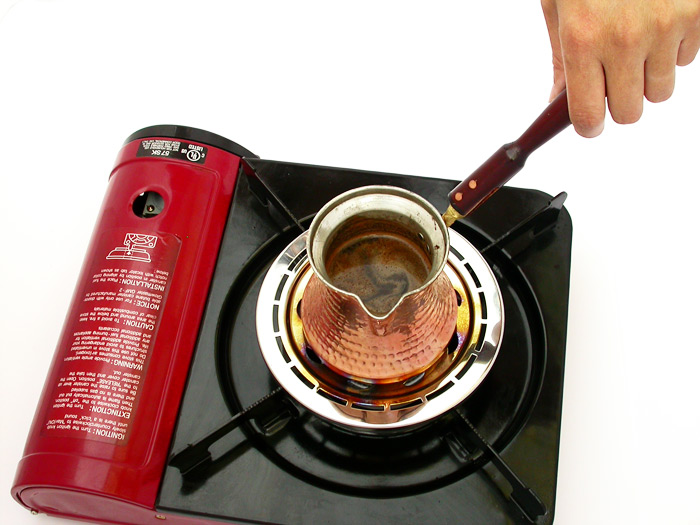
Turkish Coffee, foaming up for the first boil
Other than the cowboy coffee method (listed elsewhere in this guide), turkish coffee is one of the oldest brewing methods still used today.
The key to this method is the brewing apparatus used: it’s a kettle called an ibrik, with a wide bottom and narrow, open top, and a handle on the side. The design aids in holding back spent ground coffee when you pour the finished brew. Many ibriks are made from copper and tin.
Brewing methods vary (and you should experiment!) but the basic, standard method is to grind coffee as fine as you can (think talcum powder fine) and add 1 teaspoon per “cup” to the turkish brewer, keeping in mind the Turks and others think of “cups” as about 90ml (3oz) in size. A few pinches of a spice – it could be cardamom, anise, cinnamon or similar – are added when starting the brew. Sugar is also an option.
The slurry is heated up to boil, so that foam forms. Very quickly, the ibrik is removed from the heat source and allowed to settle. This process is repeated twice. After three foam ups, the ibrik is placed to the side to settle all the grounds into the bottom of it. The cups are prepared, and the coffee is poured among all the cups in equal measures of about 30ml per pour. Pour 3 times per cup, and you have proper turkish coffee to taste and enjoy!
What’s special about this is that it is such an old and time tested way to brew coffee, one that predates European interest in coffee. You have to try it at least once! CoffeeGeek, as usual, has a How To on the process.

DrinksCherry Shakerato
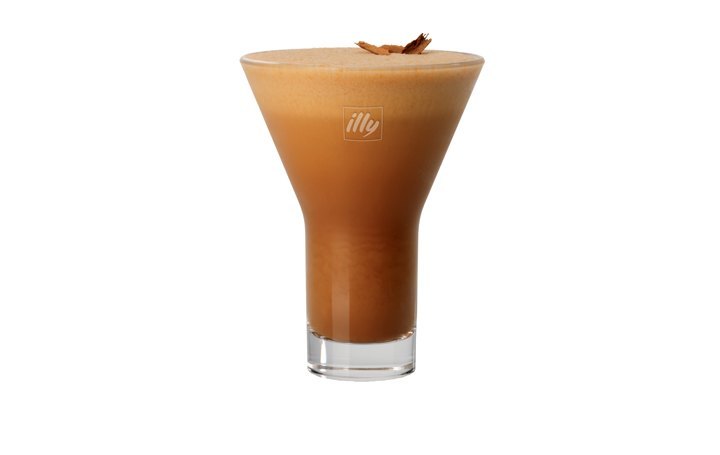
The Cherry Shakerato is a variation of the Illy Shakerato; except ours has booze in it.
Illy Coffee’s answer to iced coffee was the Shakerado, which is a nice summery drink that is pretty sweet. A bar in Milan some time ago made two variants of this drink; one with Kahlua, and one with Cherry Heering Liqueur. One day, they got crazy and mixed the two together, and created a bit of heaven in the boozy cup. Sadly, that bar’s name and the drink are lost now, and trust us, we’ve tried to find it.
We came up with a variation of this drink that is really close to the original: and to be honest, it probably is identical to the original recipe; we just can’t confirm that. If you want to taste one of the best alcoholic coffee drinks you’ll ever have, give this one a go.
- Start with a quad shot of espresso (that two double-shot pulls).
- Pour over ice (or better yet, brew it into a container with ice); we normally recommend a staged cooldown for iced espresso, but you can skip that here.
- Strain the cooled espresso off the old ice, and pour into a martini shaker with lots of fresh ice.
- Add 45ml (1.5oz) of Cherry Heering Liqueur.
- Add 30ml (1oz) Kahlua.
- Shake the daylight out of it. Keep going until the martini shaker is completely frosty.
- Strain into a chilled tall collins glass or similar, and top with freshly whipped heavy cream (not too much).
In the glass, you’ll see three layers form: the black liquid, the foamed up crema, and the white cream on top. Add a straw, sip and taste a bit of espresso cherry heaven!

BeansKa'anapali Estate Moka
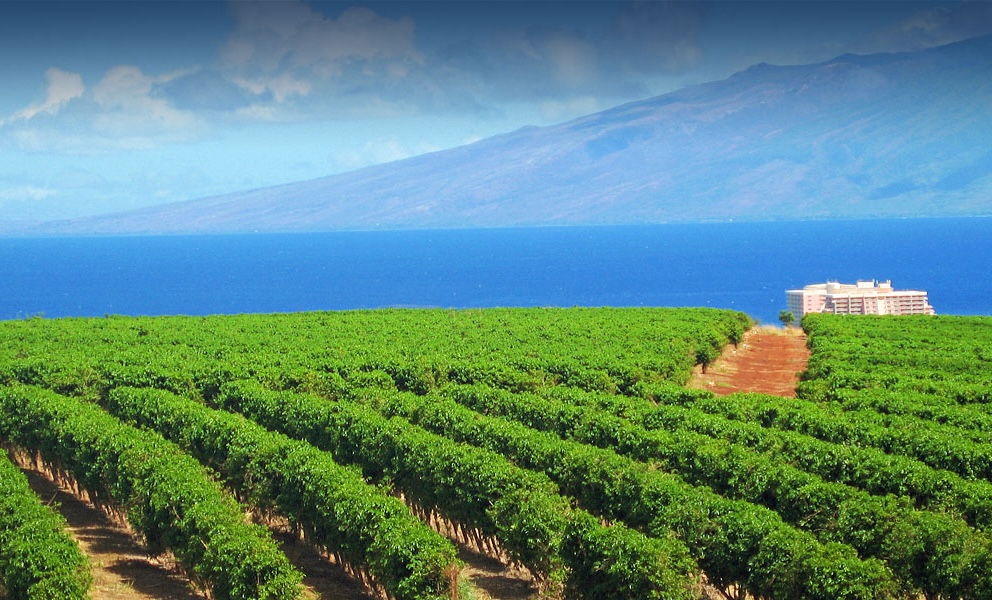
The main coffee farm at Ka'anapali Estate
I love coffees with a deep, rich story, and this most definitely is one of them. Back in 1999, Thom Owen of Sweet Marias bought several lots of a coffee no commercial roaster would buy, because the beans were so tiny, they would fall through the screens on a commercial roasting machine. That coffee was the Ka’anapali Estate Moka, from Maui, a region of Hawaii not especially known for growing coffee (Kona’s the main region).
The coffee came to be because an enterprising person brought in some Yemen Mocha seedstock to the Maui region of Hawaii back in the early 1990s, and tried to start a coffee farm. He did, but the lower growing conditions (coffee likes to grow at high elevations) stunted the growth of the trees and the cherries they produced.
The result were green coffee beans that were incredibly tiny, but also completely flavour packed with the best nuances of a great Mocha coffee. Owen was blown away by the cup profiles, and offered the coffees for sale to home roasters, most of whom were using popcorn poppers to roast 75-90g at a time (and the size of the beans don’t matter in air roasters).
The Ka’anapali Estate went through some tough times in the early 2000s. The trees went to fallow, were allowed to grow wild for nearly half a decade. But then new investors came on board, and revitalized the farm. Most recently, Kyle Anderson, the retired founder of Baratza, bought some interest in the farm, and once again, Ka’anapali is producing that wonderful, super tiny Mocha (they call it Mokka) coffee bean.
Some of us have known for a long time how special this coffee was. It still remains a secret to most in the specialty coffee industry.
To find it, Google is your friend here, but to be completely honest, most of the roasters selling this as a roasted coffee aren’t of the best reputations or skill sets. The absolute best way to try this completely unique coffee is to buy some in green format, and either roast it yourself, or get a home-roaster buddy to do it.
And we have more bad news. The terrible fires they had in Hawaii in 2023 completely destroyed the town of Lahaina, which happened to have the only coffee processing mill in all of Maui. We spoke recently to one of the farm stakeholders, and they told CoffeeGeek that all the 2022 crop, and the 2023 crop were lost in that fire. The forthcoming 2024 crop, harvested in the fall is in doubt because the mill is still not rebuilt; they’re letting the trees go to fallow for one year, and will resume harvesting in 2025.
So something to mark on your calendar: there’s no doubt that, after a full year to just recover and go natural, the 2025 crop of this coffee is going to be spectacular.

DrinksCafé au Lait
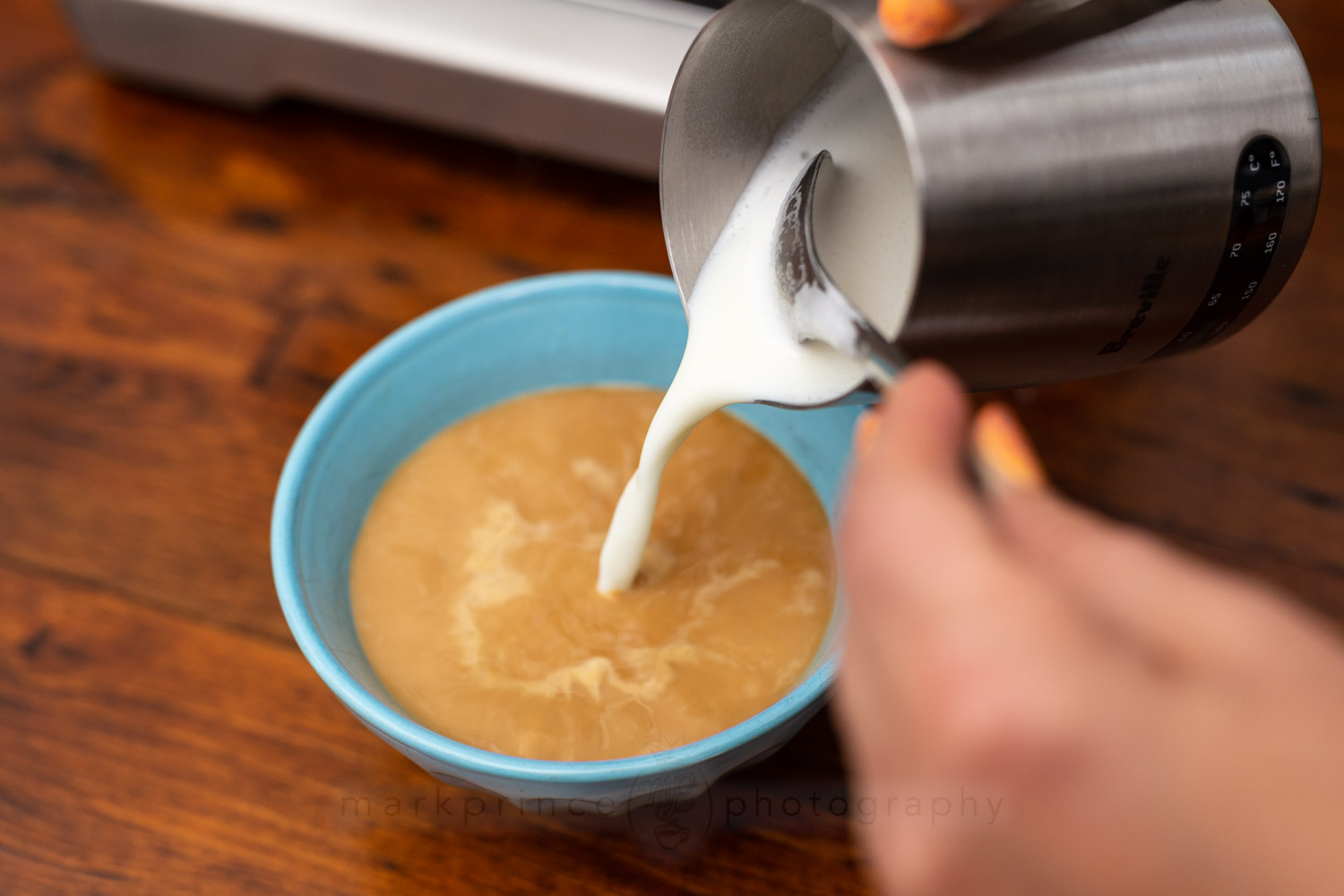
A cafe au lait, made the traditional way.
If you’ve never experienced the pure serenity and calmness that an early morning cafe au lait provides, you must do it at least once before you move on from this world.
It evokes early morning “breakfast continentale” at a hostel, or the first comforting beverage of the day on a lazy weekend.
Make it the right way too: with a Moka pot (though our guide to it says use espresso). Heat some milk up on the stove (not scalding, but hot), and add it in a 3 or 4 to 1 ratio to moka coffee into a handleless bowl. Serve it with a fresh baguette, some butter, cheese and fruit. And wisk yourself off to the French countryside!

DrinksSpanish Coffee
A more dramatic and theatrical beverage than the Irish Coffee (which is listed elsewhere in this guide) the Spanish Coffee drink involves fire and flames! What could be better!
Get to an authentic Spanish restaurant and order this drink after dinner. Or consider making it at home.
The basic build is this:
- 60ml (2oz) overproof (well above 45% alc.) rum added to a sugar rimmed, heat proof glass.
- torch the liquor in the glass to burn off some alcohol and caramelize the sugar rim.
- pour in 120-180ml (4-6oz) hot coffee quickly, to extinguish the flame.
- Top with fresh whipped, not quite stiff heavy cream.
If you don’t see the drink built this way in the restaurant, it’s not an authentic Spanish Coffee. It must have flames!
If you want an even flashier version of this drink, check out Imbibe Magazine’s feature on it.

BeansBeloya Ethiopia
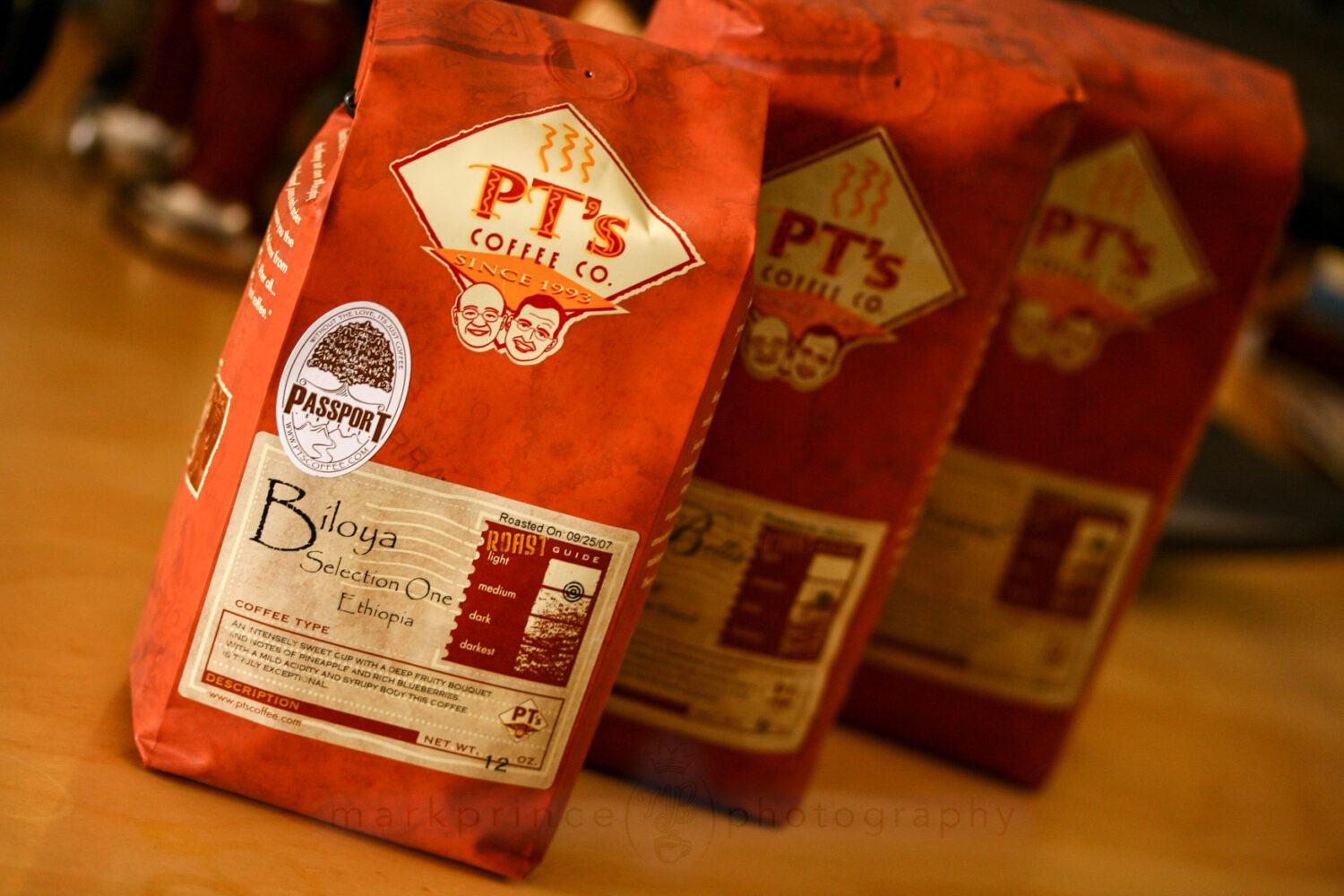
For 3 years, 2006 to 2009, Beloya coffees out of Ethiopia were available and they were spectacular.
Mark reporting in on this one: The best coffee I ever had in my entire life wasn’t a Geisha coffee from Panama. It wasn’t a Cup of Excellence award winner. No, that distinction goes to the Beloya coffees out of Ethiopia that I tried in 2006 and 2007 from several different roasters.
This coffee was beyond special, and it had equal parts due to the unique varietal that it was, and how it was processed. It was one of the first main “fermented processing” coffees on the market at the time, and the result was an incredibly juicy, fruity and chocolate filled cup of coffee.
Sadly, this coffee disappeared from the world because of major changes to how Ethiopia managed their coffee industry in 2008 and beyond. The country moved to a cooperative model for coffee farming, forcing independent producers to pool and combine their coffee harvests to sell as regional batches of coffee. This was done for good reasons: it helped make all coffee farmers in Ethiopia more money. But this homogenization of Ethiopian coffees, removing the microlots and small scale farms from individually selling their harvests, meant Beloya disappeared for a time, blending in with other varietals from the same region.
I saw it coming, so I went the “George Howell frozen green coffee” route; I bought about 5 kg of Beloya in 2008 in green bean format, packed it up in 250g vacsealed bags, and put it in our chest freezer. Every year or two, I take a bag out, thaw it, and roast it up. Heaven. I still have about 1.5kg left of that old stock.
So why is this on this list? Because things have once again changed in Ethiopia (this change did come some time ago now) where individual microlots and single-origin coffees are once again available. Ethiopia now even has their own Cup of Excellence program. And select roasters in the USA and Canada once again now seasonally offer Beloya coffees. Here’s one. Here is another. (we have no affiliation with either). Google the coffee type, remembering that Ethiopian coffees become seasonally available in the US and Canada around June and July each year. But here’s an added tip.
Look for the Beloyas using the anaerobic fermentation process. That is close to the method used in the groundbreaking, earth shattering Beloyas of nearly 15 years ago. These were the first coffees to use and benefit from this processing method, and that alone is a great reason to try them.
Are today’s Beloyas anywhere as good as the 2006-2008 variants? To be honest: not to my palate. But they are still very special, and still very, very good.

DrinksProper Espresso
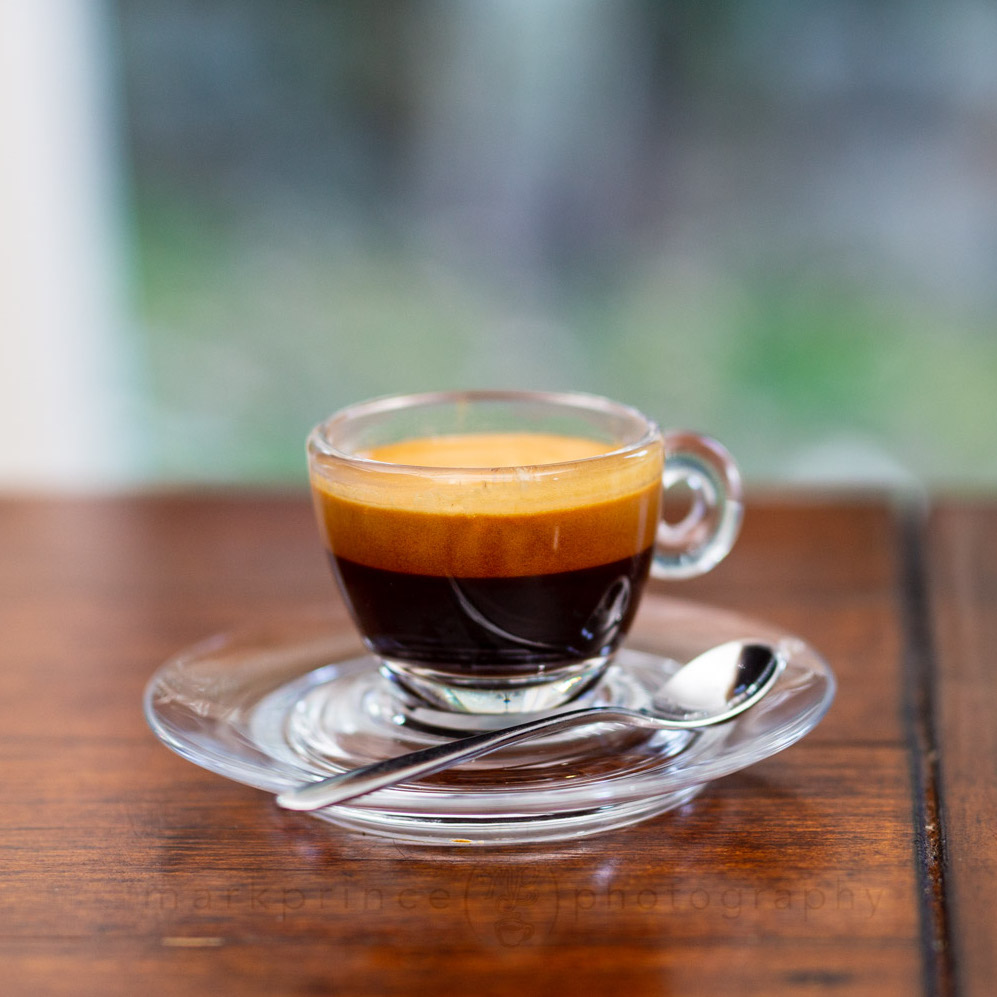
A proper espresso with good crema and served with a demitasse spoon.
Last, but certainly not least in our drink builds selections of this list is the espresso.
Surprisingly, to this day, many coffee aficionados and purists have never had a genuine shot of great espresso, straight up, with no modifiers.
You must experience at least one world class shot of espresso before you die. Google up the top cafes in your town – if you see the yelp and google reviews talk about how great their caramel mochas are, move on to another choice – and visit them.
Tell them you want a standards-bearing shot of espresso, one to mark in your culinary palate for the foreseeable future. Watch the barista get all giddy and excited to hand craft you the perfect shot.
When served (it must be with a demitasse spoon), sniff, take one sip undisturbed, and taste. Stir the crema in, and take your second sip. Enjoy that for a while as you cradle the cup and let the remaining beverage cool. Then enjoy your third and last sip from the cooled down beverage. If the espresso was brewed correctly, every taste should be unique and excellent.
We also have our definitive guide on making excellent espresso in the home.

25 DrinksConclusion
This list is by no means exhaustive, and there’s no doubt we left out things you might consider adding. Even though we list six different brewing methods, and twelve different drink builds, there’s dozens, hundreds more to consider. There’s also a lot more rare coffees to try and discover (like the coffee from Saint Helena Island, as one example).
We wanted our list to be interesting and encompass brewing methods, drink variations and coffee types you may have never tried or heard of. Of course, some you have (espresso and cappuccino come to mind) but those too are listed because not everyone has experienced the epitomes of what these drinks can be, and we want to encourage you to go out and find them.
Of course, we also want to find out from you what we missed, and what things you’d like to see on this list. Take a moment and comment below, letting us know what would make your top 25 list!


Support CoffeeGeek
If you enjoy and learn from this resource, please consider making a one time or recurring donation to help support our work and fund purchases for future reviews.
Subscribe to
Coffee Pulse
Delivered twice monthly, CoffeeGeek's premier newsletter dives into a specific coffee topic each issue. The Pulse also occasionally features contests and giveaways. Subscribing is free, and your personal information is never shared.
By submitting this form, you are consenting to receive marketing emails from: CoffeeGeek. You can revoke your consent to receive emails at any time by using the SafeUnsubscribe® link, found at the bottom of every email. Emails are serviced by Constant Contact













